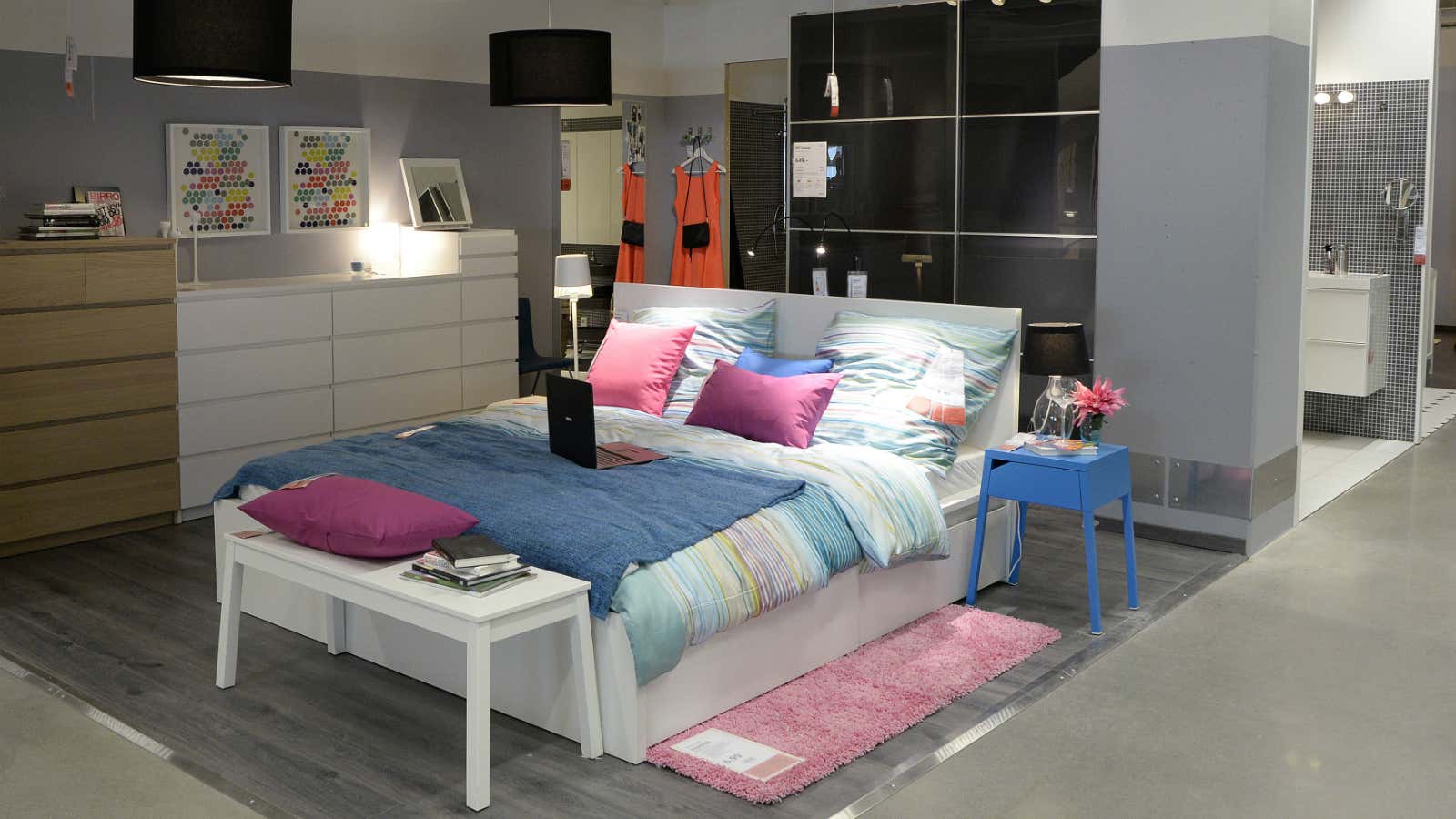How does a Swedish brand introduce millions of Indian households to its offerings?
First, IKEA used extensive research—more than 1,000 home visits over three years—to gain insights. And now, the world’s largest furniture retailer is putting to play all its findings to gather around 200 million Indian customers over the next few years.
Days before its first Indian store opens in Telangana’s capital Hyderabad on July 19, IKEA’s first television commercial hit the screens in the southern Indian state. The ad launched on July 05 and is part of the marketing blitzkrieg the company plans in Asia’s third-largest economy, which includes print, social media, and public-space campaigns.
“We really need to establish the IKEA brand quickly and get up the number of people who are aware of IKEA, so we decided to go very broad in our media,” Ulf Smedberg, country marketing manager of IKEA India, told Quartz. “While we treat each market differently, in India, the difference is that we are going big and across so much media in such a short time span,” he added.
The “make every day brighter” TV campaign, designed by advertising agency Dentsu Impact, shows an Indian family in the middle of a typical IKEA house setting, doing everything from cooking to chopping, resting, and feasting.
“Their research showed that all Indian homes were already flexible or ‘multi-purposed’. This is a deep insight. This is applicable to both upper-middle-class and middle-class homes in India,” said Kiran Khalap, co-founder and managing director of brand consulting firm Chlorophyll. “We know this is how you live, and we can be part of your life because we can provide smart and space-saving and mess-proof solutions”: That’s what the ad says, according to Khalap.
As the inauguration date approaches, the campaign will intensify—through Instagram, billboards, radio, brochures, cinema screens, and large print campaigns. “It will be clearly a 360-degree approach,” Smedberg said.
The retailer is also focussing on introducing Indians to its “affordable” price points, something its advertisement clearly reflects.
“People will not believe that we have such low prices if we don’t talk about it,” Smedberg said, adding that IKEA will introduce some 1,000 products priced under Rs200. “It (price) is extremely important as part of our offer…especially for the many Indians if we do not have the attractive price points it will not be acceptable so that I think is quite unique that we bring the price points inside TV commercials,” he said. For instance, the TV ad shows everyday items of use such as lid jars, cushions, stools, and storage lid box—all priced below Rs400.
“There is another brand that has become ‘Indian’ in a very short while—Amazon. They use even sharper insights into the daily lives of Indians. My guess is IKEA will graduate to that level,” said Khalap.
